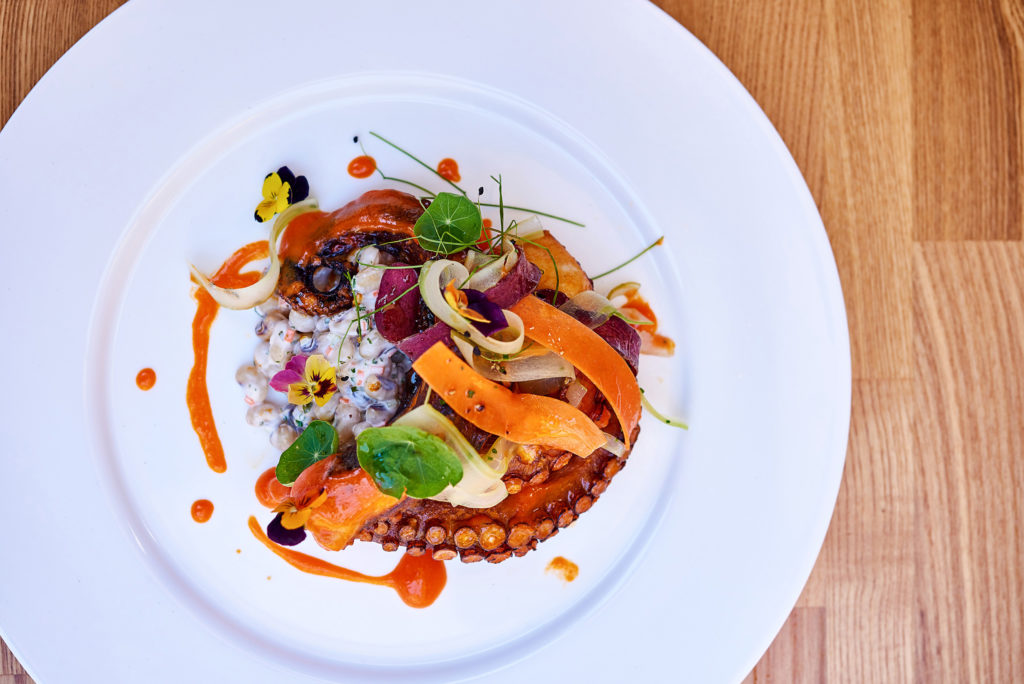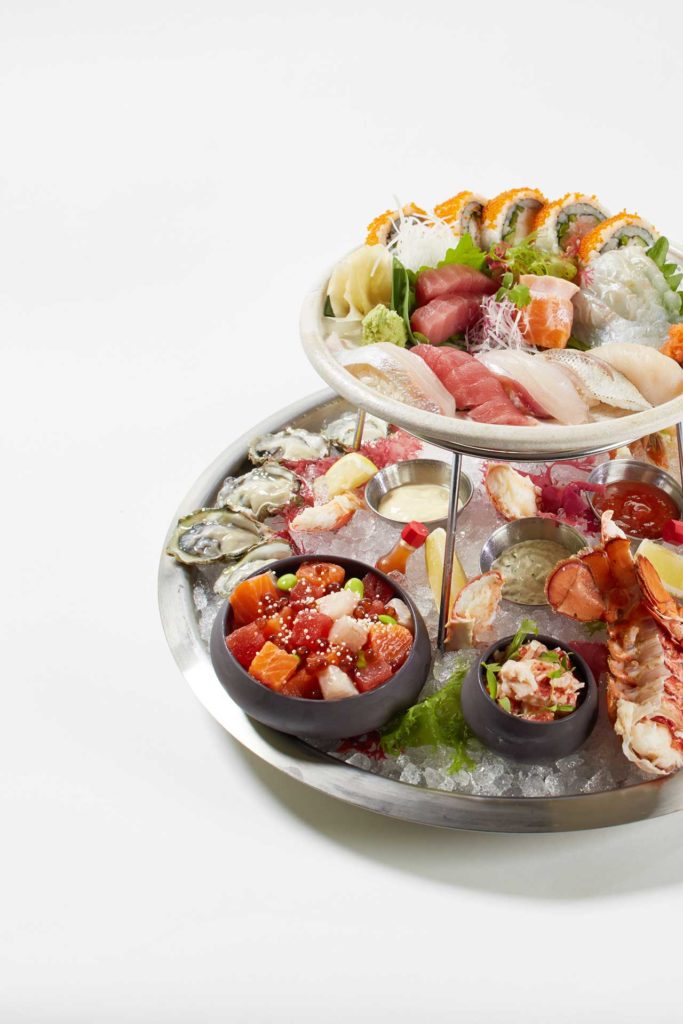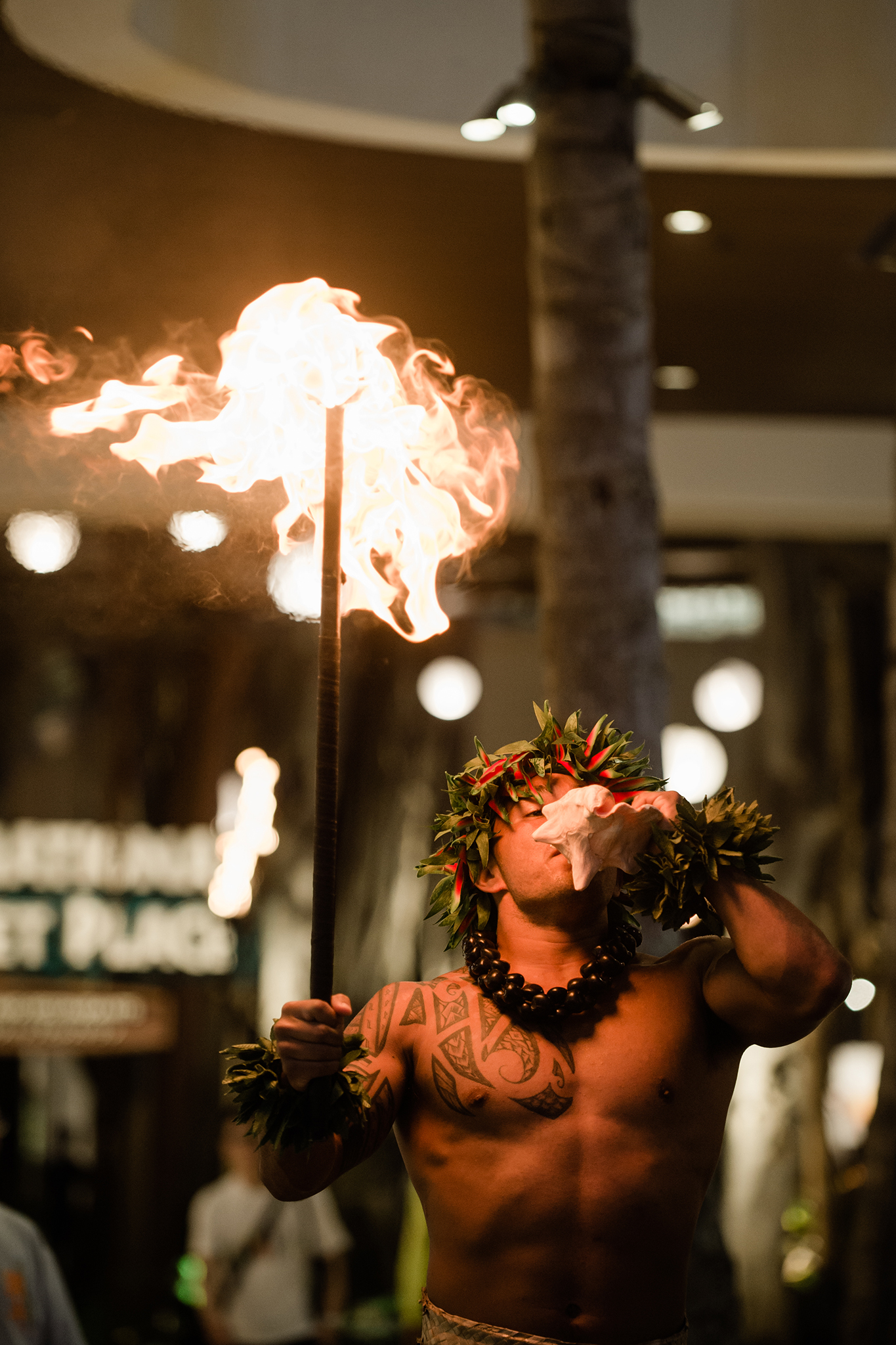

Sea of Flavor
A robust culinary movement sources from local waters to capture the islands’ freshest flavors for diners.
✏️ CATHERINE TOTH FOX
📸SAMANTHA FEYEN AND COURTESY OF STRIPSTEAK WAIKIKI AND HERRINGBONE
地元ハワイの水系から調達する、一番新鮮な味覚を お届けします。
When the seafood tower arrives at tables at StripSteak Waikiki, the restaurant’s goal is to amaze. The two-tiered tower brims with decadent seafood, from Alaskan king crab legs to oysters to succulent shrimp.
The part that is actually amazing? Much of it is sourced locally.
“We are lucky to be located in the middle of the Pacific and surrounded by the ocean’s bounty,” says executive chef Jamie Zager. “We strive to always showcase the freshest local fish and the bright delicious flavors that Hawai‘i has become known for.”
StripSteak’s seafood tower, for example, features Kona lobster, local ‘ahi, and oysters raised in an ancient Hawaiian fishpond at Kualoa Ranch. The restaurant also serves kampachi (Almaco jack) farm-raised in the Kona region of Hawai‘i Island, shrimp grown on Kaua‘i, and ‘ahi fresh from the Honolulu Fish Auction, all paired with locally grown produce.


“Our menu reflects the best of local ingredients, and we are fortunate enough to showcase the importance of supporting local farmers and their products,” Zager says.
While the islands are surrounded by an ocean abundant in fish and other edible marine creatures, the state actually imports the bulk of its seafood. The average commercial consumption of seafood in Hawai‘i between 2000 and 2009 was 38.9 million pounds per year, and only 37 percent of that came from local waters. As with other states, Hawai‘i consumers want more variety than is available locally, including Alaskan king crab and wild-caught salmon, which fuels the demand for imported seafood.
But local restaurants, like those at the Grand Lānai at the International Market Place, are commited to using the freshest, highest-quality ingredients, which includes locally sourced seafood.
Gary Tamashiro, who was named executive chef at Herringbone Waikiki in August 2018, grew up fishing on O‘ahu. Recently, he drove to Hale‘iwa to fish for halalū, also known as young akule or big-eyed scad. “Being in Hawai‘i, we want to utilize and showcase local seafood,” he says. “Sometimes it’s hard or it’s pricey … but it’s very important for us to use the freshest ingredients, and we want the best.”
When oysters from Kualoa Ranch are available, Herringbone serves them during its popular Oyster Hour (from 4 to 6 p.m. daily), when oysters on the half shell are just $2 each. The ranch grows these Pacific saltwater oysters in its 153-acre Hawaiian fishpond, Moli‘i, which can hold around 50,000 of the mollusks at a time.
“Oh my God, they’re so good,” Tamashiro raves. “It’s got a really great flavor. It’s like eating a fresh melon, the texture, and it’s not very salty.”
The restaurant also serves a fresh catch of the day that is seared with the skin on and served with a citrus-miso glaze and an assortment of vegetables.


“It’s funny, we have salmon on the menu and it actually sells a lot because visitors might be afraid to explore and try the fresh, local fish,” he says. “But if you come to Hawai‘i, you gotta try these things.”
The menu at Eating House 1849, a restaurant concept by James Beard Award-winning local chef Roy Yamaguchi, is packed with local seafood including prawns from Kaua‘i and Hawai‘i Island abalone. Much of the fish—‘ahi, monchong, opah, kampachi, mahimahi—is locally sourced, too.
The most popular dish featuring local seafood is its chirashi bowl, which combines ‘ahi and kampachi with local carrots and romaine lettuce atop a bed of somen noodles, everything dressed with a truffle-ponzu sauce.
“It’s always important to support local seafood and ingredients, which helps Hawai‘i communities grow,” says Eating House 1849’s executive chef, Randy Bangloy, who loves working with local opah because of its versatility. “I’m surprised about the quality, texture, and taste of local seafood and how it changes throughout the year.”
Zager, who hails from the East Coast of the United States, agrees. “I was surprised that there is such an abundance of local seafood to work with here on O‘ahu,” he says. “At times, I don’t know what to highlight, so I just highlight everything! We are very blessed.”








